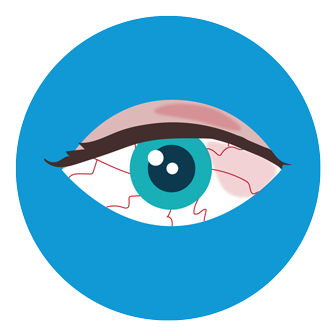

Demodex is the most common ectoparasite found in humans.
It is so common it can be found in 25% of 20-year-olds, 30% of 50-year-olds, 84% of 60-year-olds, and 100% in patients older than 70 years affecting up to 25 million Americans.2
Anyone can get a Demodex mite infestation. Coming in close contact with someone who has a Demodex infestation, dust containing Demodex eggs, sharing cosmetics, or having a weakened immune system can lead to a mite infestation.

Patients with rosacea, dermatitis, inflammatory acne, alopecia, skin infections, eczema, dandruff, and weakened immune systems are at a greater risk of developing eyelashes mite infestations.
While mites are typical on human skin, these conditions can create a breeding ground because dead skin is food for mites.
Discover Eyelid Hygiene Cylindrical Dandruff
Cylindrical Dandruff Eye & Eyelid Irritation
Eye & Eyelid Irritation
 Burning, Itchy & Gritty Feeling
Burning, Itchy & Gritty Feeling
 Eyelash Growth Abnormalities
Eyelash Growth Abnormalities

The signature sign of Demodex is the presence of collarettes, or cylindrical dandruff, at the base of the eyelashes.1
Demodex mites are a leading cause of blepharitis, interfering with your sight, or worsen underlying skin conditions.
Blepharitis is an eyelid inflammation, which can cause itchiness around the eyelashes, redness around the eyes, and dry eyes. You may notice crusty and sticky eyelashes. You may feel like there may be something in your eyes, a burning sensation, blurry vision, and eyelash loss.
If left untreated, blepharitis can cause a sty, chalazion, chronic pink eye (conjunctivitis), dry eye, and injury of the cornea.
There are two different types of Demodex mites that live on the human body:

Having Demodex mites is normal, but when there is a Demodex infestation that is when problems may occur.
However, some people end up with too many mites burrowing into the skin, leading to an infestation that causes inflammation in different parts of the body.
Getting Demodex blepharitis under control is simple. By eliminating the mite infestation, your symptoms will improve dramatically.
Fortunately, there is an effective way to eliminate Demodex mites from the comfort of your home.
Discover a natural way to alleviate symptoms of Demodex Blepharitis